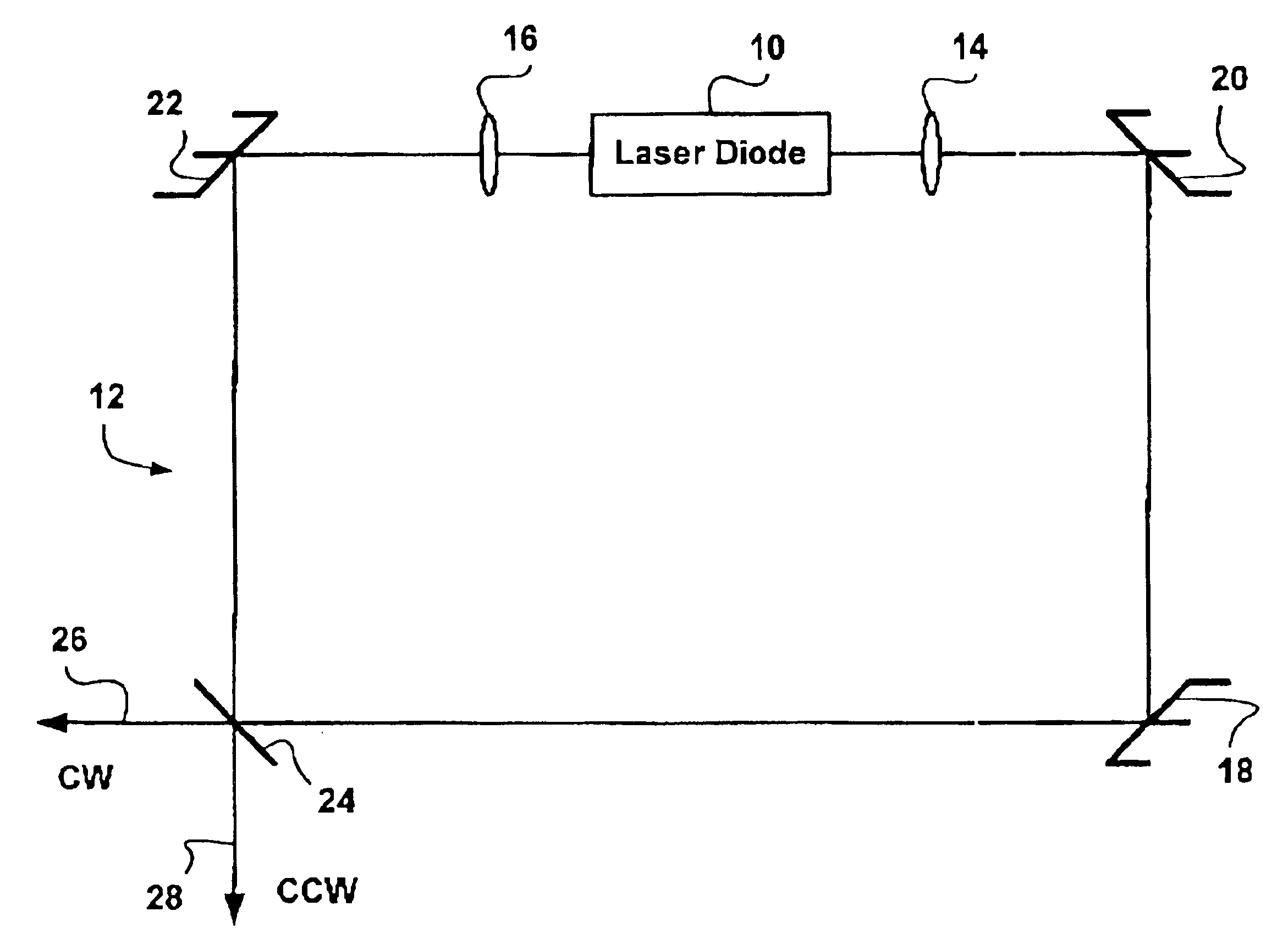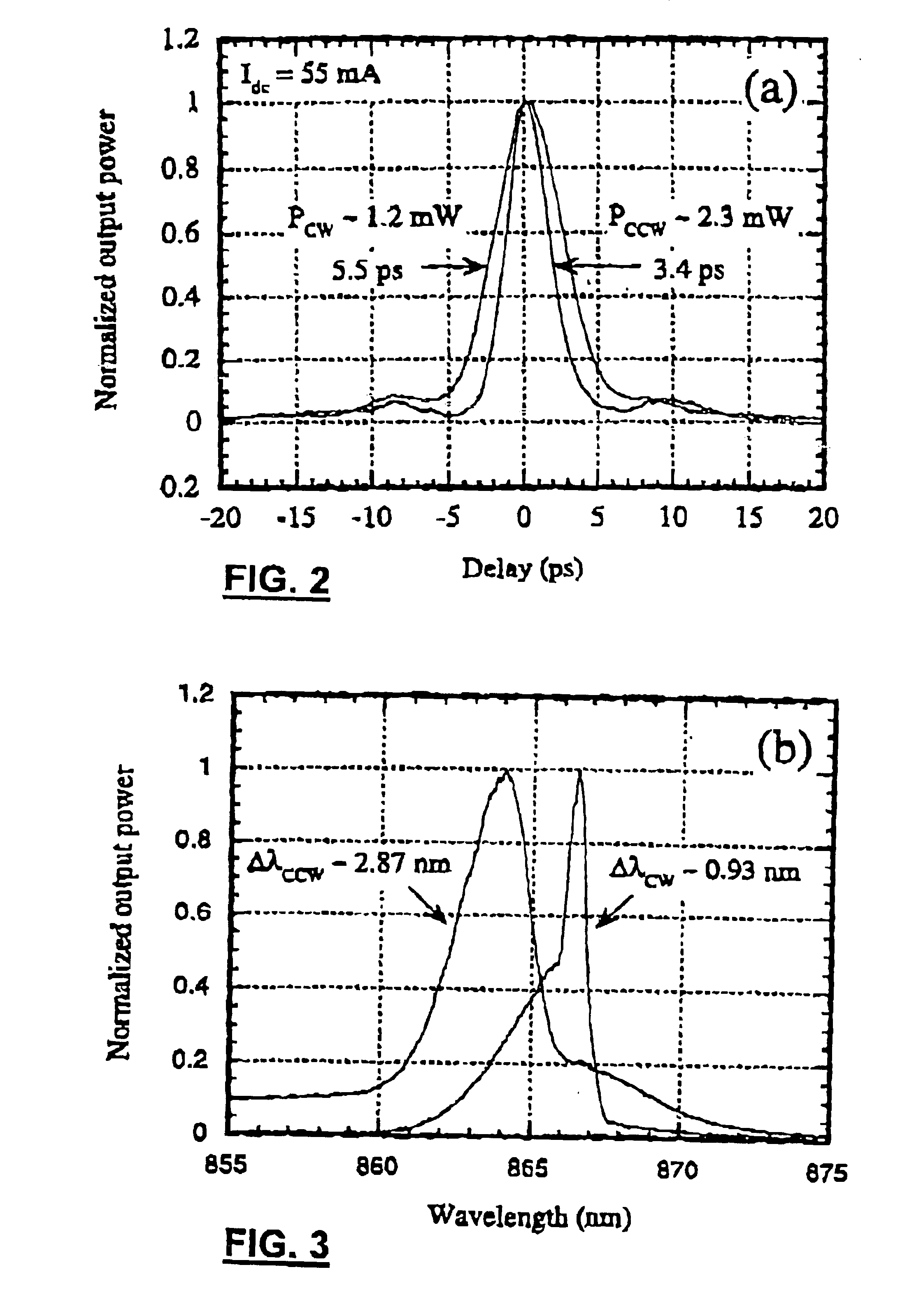Dual-wavelength passive self-modulated mode-locked semiconductor laser diode
a semiconductor laser and self-modulation technology, applied in the direction of lasers, semiconductor lasers, optical resonator shape and construction, etc., can solve the problems of laser diode irreversible damage, laser diode inoperability, sharp emission spike (or pulse),
- Summary
- Abstract
- Description
- Claims
- Application Information
AI Technical Summary
Benefits of technology
Problems solved by technology
Method used
Image
Examples
Embodiment Construction
A semiconductor laser diode 10 is inserted in a ring cavity 12. The laser emission undergoes a transition from a noisy multimode operational regime to a mode-locked operational regime. In the mode-locked regime, trains of counterpropagating picosecond pulses are generated. The counterpropagating pulses are temporally synchronized and are centered about different wavelengths.
Dual-wavelength emission is a novel characteristic of a passive self-modulated mode-locked semiconductor laser diode 10. The procedure used to mode-lock the semiconductor laser diode 10 includes a proper cavity alignment as a key feature.
The apparatus is schematically represented in FIG. 1. The apparatus includes the following elements:A semiconductor laser diode amplifier 10. The laser diode amplifier provides a gain necessary for lasing action. The laser diode 10 is a superluminescent diode such as a 500 micron long double quantum well InGaAs ridge waveguide with strained InGaAlAs active layers from EG&G Optoel...
PUM
 Login to View More
Login to View More Abstract
Description
Claims
Application Information
 Login to View More
Login to View More - R&D
- Intellectual Property
- Life Sciences
- Materials
- Tech Scout
- Unparalleled Data Quality
- Higher Quality Content
- 60% Fewer Hallucinations
Browse by: Latest US Patents, China's latest patents, Technical Efficacy Thesaurus, Application Domain, Technology Topic, Popular Technical Reports.
© 2025 PatSnap. All rights reserved.Legal|Privacy policy|Modern Slavery Act Transparency Statement|Sitemap|About US| Contact US: help@patsnap.com



